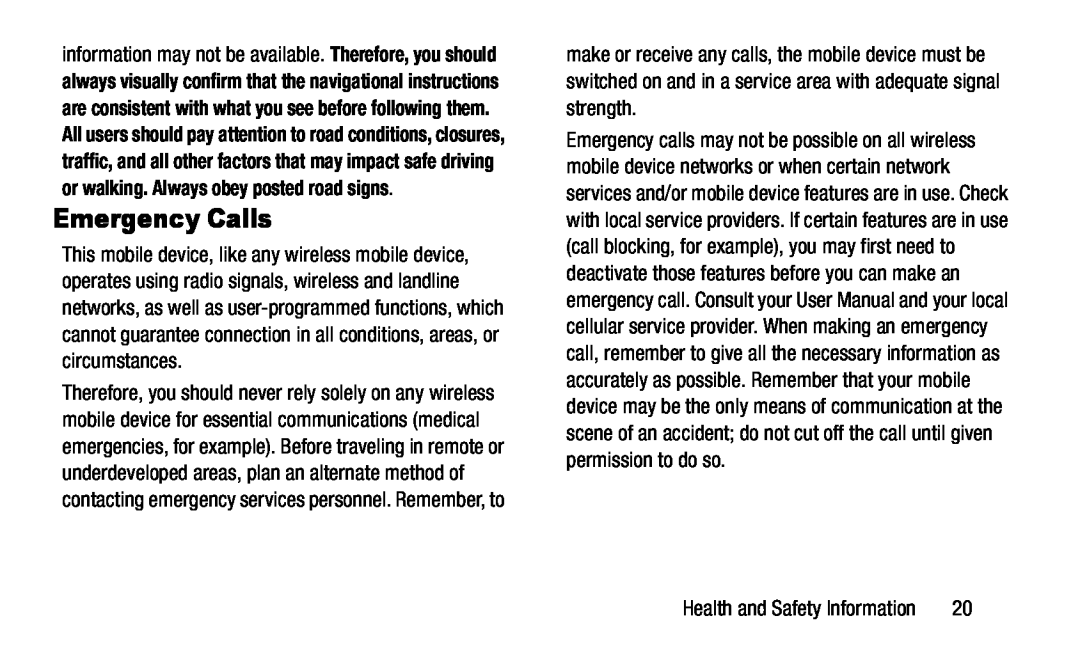information may not be available. Therefore, you should always visually confirm that the navigational instructions are consistent with what you see before following them.
All users should pay attention to road conditions, closures, traffic, and all other factors that may impact safe driving or walking. Always obey posted road signs.
Emergency Calls
This mobile device, like any wireless mobile device, operates using radio signals, wireless and landline networks, as well as
Therefore, you should never rely solely on any wireless mobile device for essential communications (medical emergencies, for example). Before traveling in remote or underdeveloped areas, plan an alternate method of contacting emergency services personnel. Remember, to
make or receive any calls, the mobile device must be switched on and in a service area with adequate signal strength.
Emergency calls may not be possible on all wireless mobile device networks or when certain network services and/or mobile device features are in use. Check with local service providers. If certain features are in use (call blocking, for example), you may first need to deactivate those features before you can make an emergency call. Consult your User Manual and your local cellular service provider. When making an emergency call, remember to give all the necessary information as accurately as possible. Remember that your mobile device may be the only means of communication at the scene of an accident; do not cut off the call until given permission to do so.
Health and Safety Information | 20 |
